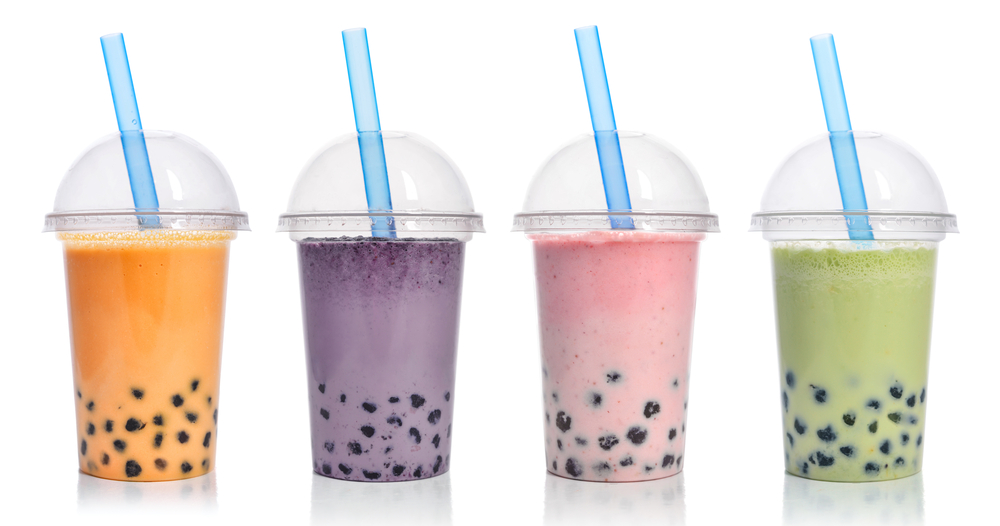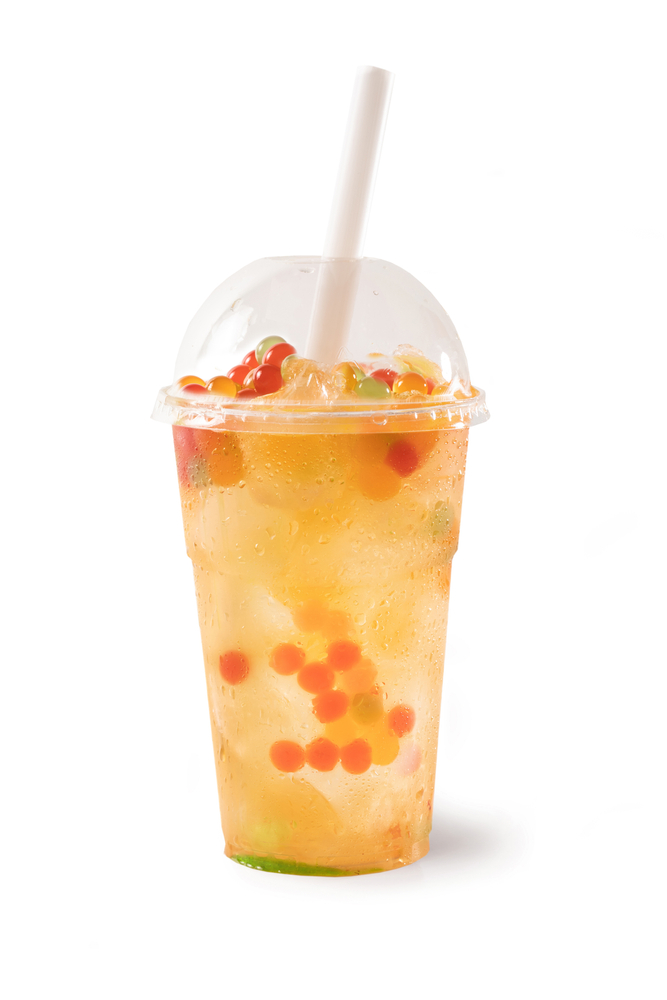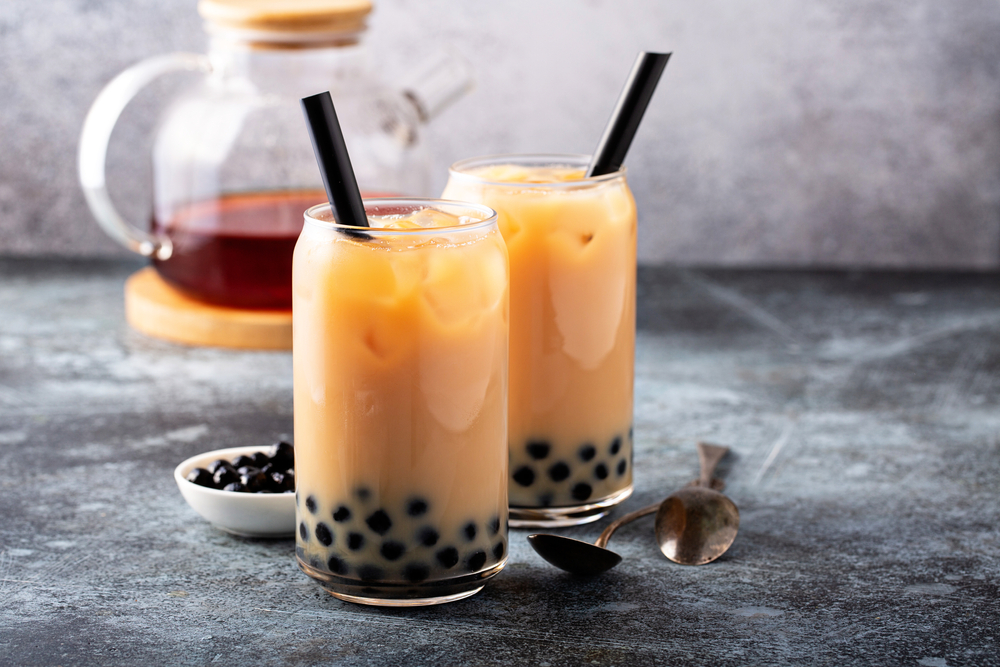When comparing milk tea vs bubble tea, you’ll first notice that bubble tea includes tapioca pearls or other garnishes. Milk tea does not. Aside from what meets the eye, there are a few other key differences.
Milk Tea
Tea was invented in 2737 B.C. It was initially drunk without any additives. However, as soon as someone was brave enough to mix dairy into their tea, that all changed.
When making a cup of milk tea, the main ingredient is milk. Boba pearls are not included in this drink. Traditional Chinese milk tea is made with whole milk, while Hong Kong milk tea is made with condensed milk.

Bubble Tea
This refreshing Taiwanese drink has different names, including pearl tea, tapioca tea, pearl milk tea, or boba milk tea.
Chewy tapioca pearls are the star ingredient in bubble tea. They are made from tapioca starch and are gluten-free with a nice chewy texture. After the tapioca balls are made, they are often soaked in brown sugar syrup or simple syrup, giving the tea an added sweetness.
Since the invention of bubble tea in the 1980s, boba tea shops have been popping up worldwide. As popularity grew, owners started introducing different tea flavors and fruit flavorings into their boba drinks using syrups and powders.
To stand out and give their clients more options, bubble tea shops got creative with their tea garnishes. Today, aside from boba balls, you can find additional options such as grass jelly, aloe, almond jelly, egg pudding, and red bean boba.
Most boba tea varieties have a black tea, oolong tea, or green tea base. Jasmine teas (white, black, or green) are also common. Matcha is also an excellent bubble tea base option.

Similarities and Differences
While the teas seem almost identical, there are a few key differences.
| Milk Tea | Bubble Tea |
| Always made with creamer | Can be vegan |
| Fewer flavor options | Endless flavor options |
| Sipped, like hot tea | Typically consumed through a straw |
| Main addition is milk and sweetener | Main addition is tapioca pearls, syrup, or powder |
| Typically served hot | Typically served cold |
| Originated in China | Originated in Taiwan |
With that said, there are also a couple of similarities.
- Black tea is the traditional base for both options.
- Both drinks are typically made with whole milk and are rich in calcium. Alternatively, dairy substitutes can be used in both, including oat milk, almond milk, soy milk, or coconut milk.
- Traditional milk tea and bubble tea contain high sugar levels; however, this can be adapted to personal preference.
Can You Order Bubble Tea Without Milk?
Yes, you can order bubble tea without milk. If you want something flavorful, fruit bubble teas are a great option. Fruit teas often have a traditional tea base with fruit syrup added and no dairy.
You can choose from various fruit flavors, including passion fruit, mango, strawberry, peach, lychee, and more.

Which Tea is Healthier?
Milk tea is healthier than bubble tea in terms of calories and carbohydrates. However, both of these drinks have a considerable amount of sugar. A typical 16-ounce bubble milk tea has approximately 300 calories. A typical serving of milk tea, 8 ounces, has about 92 calories. However, these numbers change depending on the type of sweetener and the amount used.
The tapioca pearls add a lot of carbohydrates to bubble tea. Drinking bubble tea every day is not recommended. Milk tea is more suitable as a daily indulgence due to its lower caloric and carbohydrate content.
On the bright side, green tea and black tea, which can be used in both options, have several health benefits. Green tea has been said to boost brain function, increase antioxidants, and burn fat. Black tea has been said to improve gut and heart health, increase alertness, and increase your metabolism.

